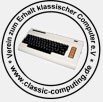Hi,
Sorry to write in English, I am french 
I am the PicoMEM author, and I see lot of question here that only me can answer.
I will answer to some here and to other individually.
Overclock the Pi Pico is really simple, there is a register to set different frequency and the core voltage is also configurable by Software.
The PicoGUS successfully work with the cores at 400MHz.....
Thi Pico has no problem at all at 240/270MHz.
By Board does not emulate an HDD or a Floppy, it is doing "Better", it does emulate the int13h almost entirely, the PicoMEM BIOS send the registry values to the Pi Pico, the Pi Pico give orders to the PC BIOS (Memory block copy) then return the registry result.
Then, my Board can act as a "Pure" hardware emulator with I/O and MEM access control, or Interrupt "emulation" with DOSBOX Code...
If somebody want to emulate an MFM Controller with the PicoMEM, why not.... but I will not spend time on this as just execute DOSBOX Code give acces to much more easily.
I saw somebody writing that "It is not good, it does not emulate the hardware itself"
The PicoMEM has no "Real Goal", anything can be done as it is software.
It can't emulate a Floppy controller, just because the Floppy controller ALREADY exist on the PC....
Also, nobody complain that an XTIDE does not emulate in hardware an MFM Controller....
Then, XTIDE is "Better"
But... XTIDE is First an int13h BIOS that give access to an IDE interface HDD.
The PicoMEM is the same, but further, because the Int13h code is in the Pico, not in the PC ROM...
I did read about Serial port and other... But what for ? Why emulate a serial port when we can do Wifi, Serial through USB or plus directly any USB HID (Mouse/KB/Joystick)
The idea for the picoMEM come from simple frustration :
We see TI99, AtariST, Amiga, C64 or ZXSpectrum with SDCard reader, but the PC XT had only the XTIDE that is really complex to use...
Then, came the PiSTORM, when a 4 core 4GHz CPU is used to emulate a 68000 through a FPGA.....
I did think it was time for the PC to enter the 21th century 
Something that was not explained is that the PicoMEM has its own BIOS interface/Menu, then, everything is automatic.
It detect the Real RAM/ROM MAP and can automatically extend the PC.
For the HDD/Floppy "Emulation" the images can be selected from .IMG files stored on a MicroSD.
and everything can be disabled...
We can have the PicoMEM doing nothing, only Part of the RAM extention, EMS, Floppy or disk
If there is a problem because the PicoMEM Memory does not support DMA, it can be disabled if you need to use a floppy (And the software place its buffer in the PicoMEM RAM) It take some seconds only 
The Board is named PicoMEM because it is the first one that is interfacing with the full ISA MEMORY address space.
The main goal was to do Memory entention, but it can do much more....

